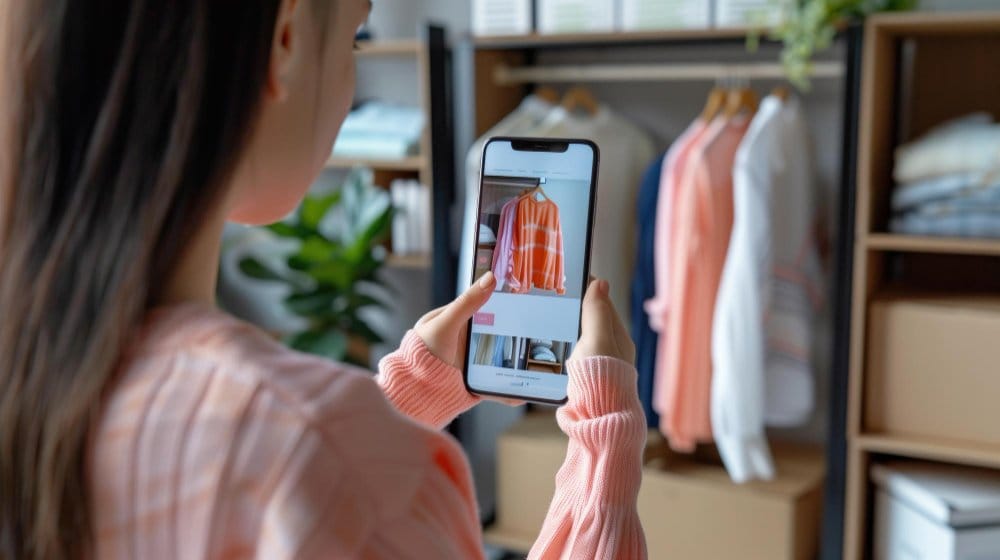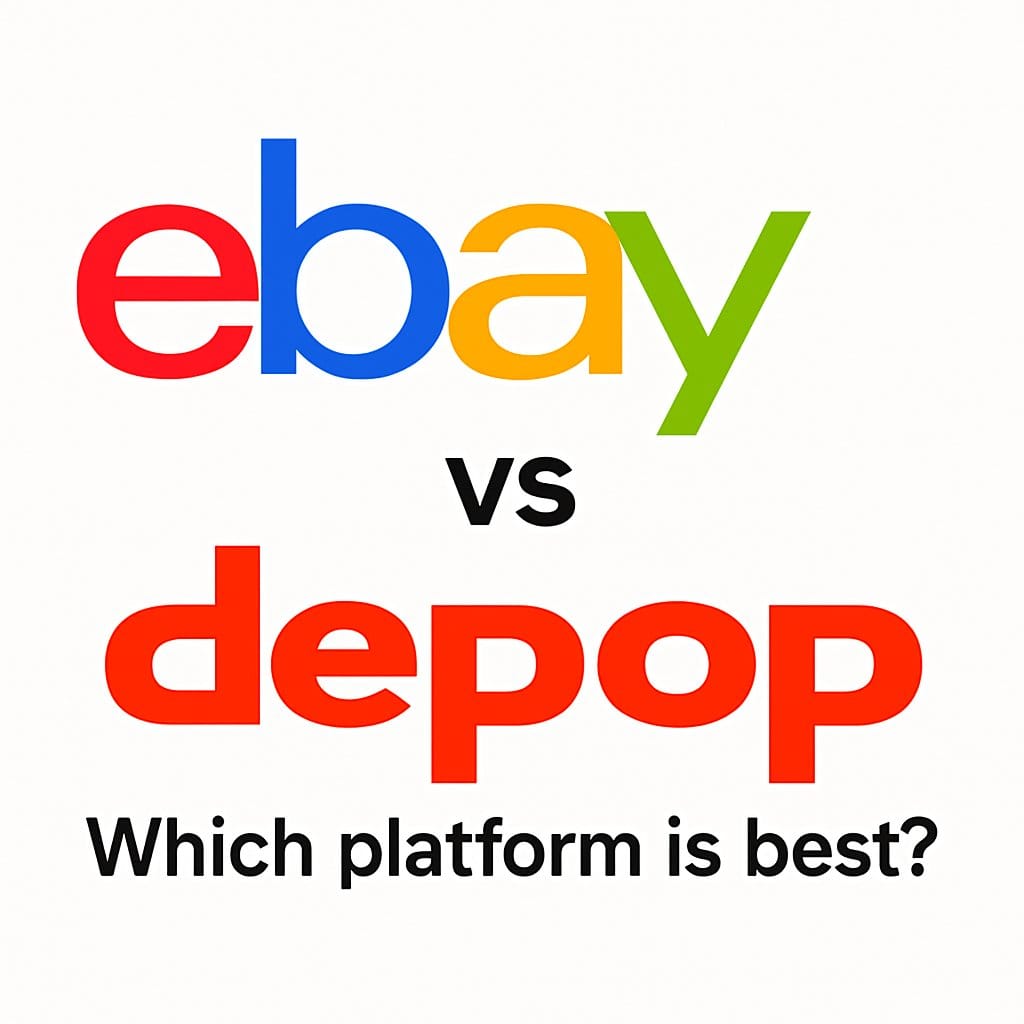The Ultimate Comparison of Depop vs Poshmark for Online Clothing Sellers in 2025
Selling your clothes online can be a great way to clear out your closet and make some extra money. You might have heard of Depop and Poshmark, two of the most popular platforms for selling secondhand clothing. Each platform works differently, and choosing the right one can have a big impact on how much you sell and how much you can earn.
Depop is known for its younger, trend-focused users and vintage styles, while Poshmark has a reputation for more classic fashion and a wide variety of brands. Listing items, handling shipping, and the fees you pay all vary between these two apps. Learning the key differences will help you decide which platform fits your needs best.
Table of Contents
Key Takeaways
- Selling on Depop and Poshmark can be very different depending on your items and audience
- Listing process, fees, and shipping options are not the same on both platforms
- Picking the best app can increase your sales and make online selling easier
- Tax implications and legal considerations vary depending on your sales volume
- Strategic approaches to photography and listing optimization can significantly impact your success
Overview of Depop and Poshmark
Depop and Poshmark are two popular online marketplaces for selling second-hand clothing and accessories. Each platform attracts different types of buyers and sellers, and they come with unique features, fees, and user experiences.
What Is Depop?
Depop is an app-based marketplace mainly aimed at younger people interested in trendy, vintage, or streetwear fashion. You list your clothes, shoes, or accessories by uploading photos, setting prices, and writing short descriptions.
The platform feels similar to social media, making it easy to follow other users, like items, and share listings. Shoppers often look for unique, rare, and retro pieces, as well as sustainable or upcycled clothing.
Depop removed its selling fees but still charges payment processing fees for each sale. Shipping is flexible; you can choose to ship items yourself or let buyers pay for shipping. This marketplace works best if you’re selling trendy or niche styles and want more control over how you connect with buyers.
What Is Poshmark?
Poshmark is a large online marketplace known for reselling brand-name fashion, shoes, and some household items. It is especially popular among people looking for mid-range to luxury brands, including both new and gently used items.
You list clothes by uploading pictures and entering details like brand, size, and condition. The app has a built-in shipping system, making it simple to print labels and mail packages. Poshmark charges a 20% fee for most sales.
Poshmark encourages community activities, such as sharing each other’s listings and joining virtual “Posh Parties” that promote different types of clothing or brands. If your closet has well-known brands or you want a structured selling process, Poshmark offers a straightforward experience.
How Does Depop Work vs Poshmark?
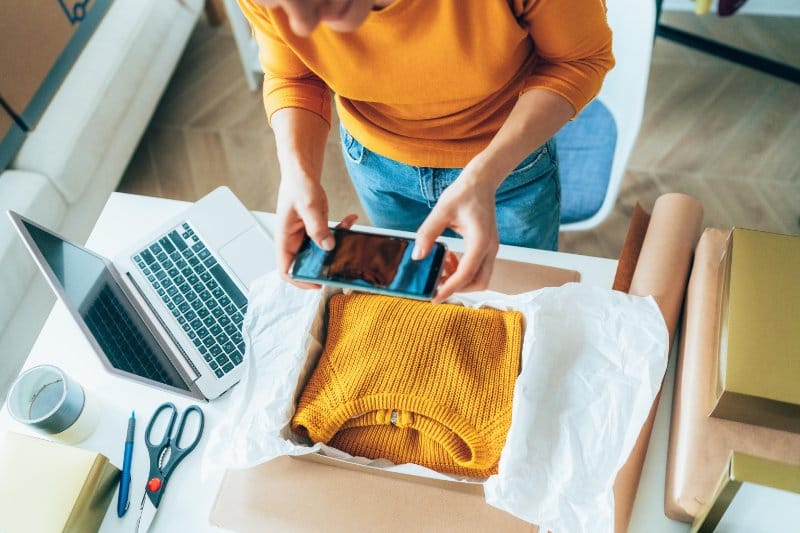
The fundamental user experience differs significantly between these two platforms, affecting how you’ll interact with buyers and manage your online shop.
Depop’s Instagram-Like Experience
On Depop, you’re essentially creating your own mini boutique with a social media feel. The platform operates much like Instagram, where your followers see your new listings in their feed. This visual-first approach means your photography style and aesthetic matter significantly.
You can message buyers directly, negotiate prices, and build a following based on your unique style. The platform encourages creative expression and building a cohesive brand identity that resonates with its predominantly Gen Z user base.
Poshmark’s Community-Driven Marketplace
Poshmark functions more like a traditional marketplace with strong community features. The platform revolves around “closets” rather than profiles, and success often depends on your engagement with the community.
You’ll need to regularly share your listings (and others’) to maintain visibility. Poshmark’s “Posh Parties” are virtual shopping events centered around specific themes or brands that can dramatically increase your items’ exposure if you participate actively.
While Depop rewards aesthetic and uniqueness, Poshmark rewards consistency and community participation. Understanding this fundamental difference is key to your success on either platform.
Target Audiences and Product Niches
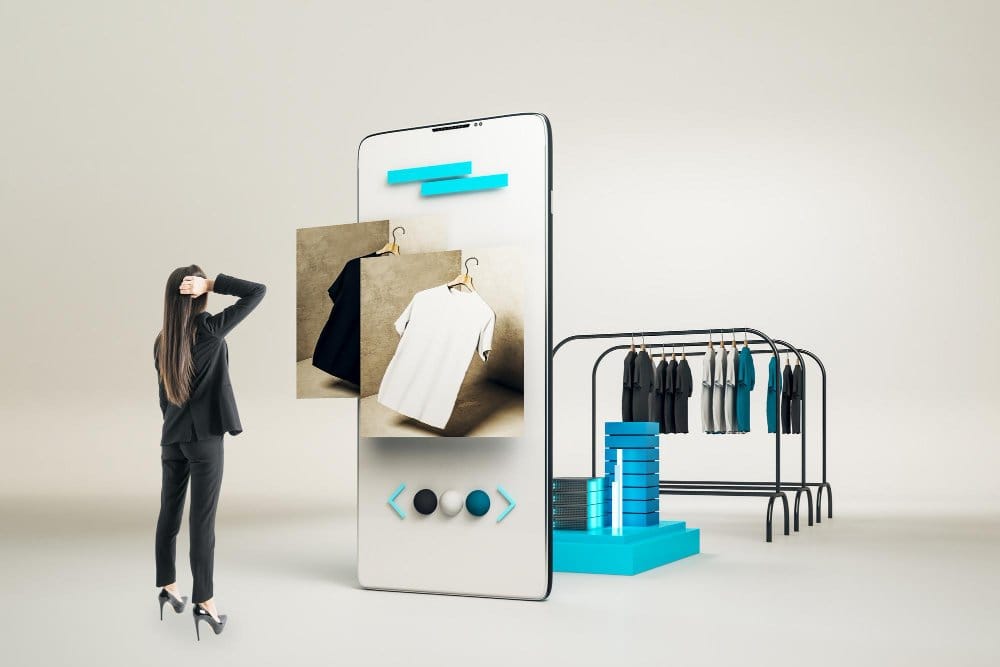
Choosing the right platform depends on who you want to sell to and what types of clothes you want to list. Depop and Poshmark each have their own unique shopper base and best-selling niches, so understanding these differences can help guide your selling strategy.
Demographics of Depop Users
Depop attracts a younger audience, with most users under age 25. Many shoppers are Gen Z, interested in streetwear, vintage clothing, and unique or trendy styles.
Social media plays a big part on Depop. Buyers and sellers use features like messaging and sharing, making the app feel like a mix between a fashion marketplace and a social network.
Trendy pieces such as graphic tees, Y2K fashion, and upcycled clothing do well here. If your closet includes bold, creative, or retro items, you will likely find interested buyers on Depop.
Demographics of Poshmark Users
Poshmark has a broader age range, but its main shoppers tend to be older than Depop’s. Many users are millennials in their late 20s to 40s who are looking for quality fashion at a lower price.
Shoppers on Poshmark care about brand names and good deals on gently used clothing. You will also find professional women searching for workwear, athleisure, and popular mainstream brands.
Community features, like sharing listings and following closets, help sellers connect with buyers. On Poshmark, it’s common to see repeat customers who follow their favorite sellers for new items.
Best-Selling Categories on Each Platform
On Depop, the best sellers are usually vintage clothing, streetwear brands, and unique secondhand pieces. Popular categories include:
- Vintage denim
- Graphic tees and sweatshirts
- Y2K and 90s inspired clothing
- Sneakers and statement accessories
For Poshmark, top-selling categories focus more on high-demand mainstream brands and quality secondhand clothes. Categories that do well include:
- Designer and name-brand fashion
- Athleisure and workout wear
- Gently used shoes and handbags
- Classic workwear and casual pieces
If your wardrobe has items that fit these categories, you can use this information to decide where your pieces might sell the fastest. Matching your closet to the right platform’s audience increases your chances of making more quick, successful sales.
How Do You Sell on Depop vs Poshmark?
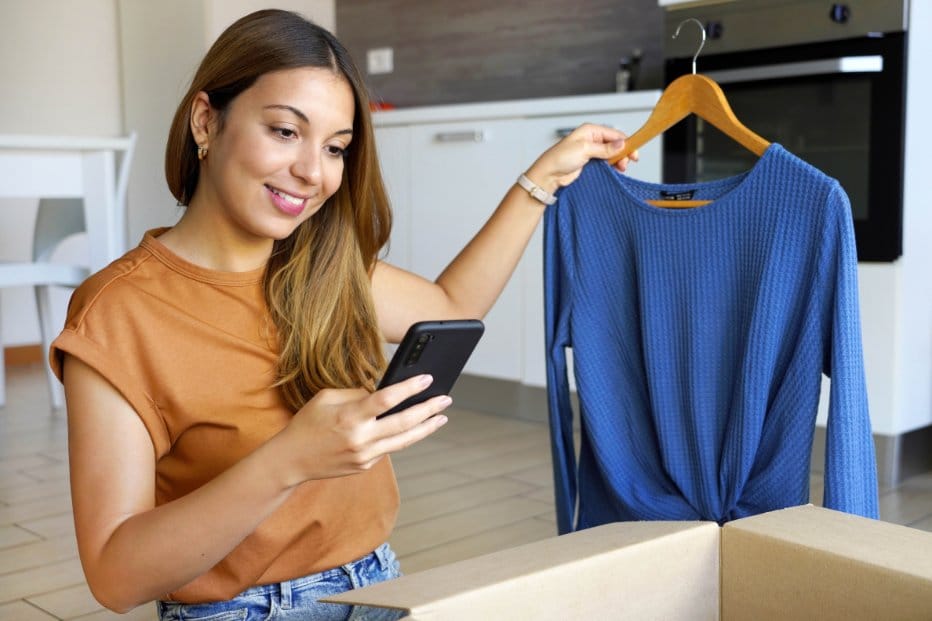
Selling on both platforms involves similar steps, but the execution differs in important ways. Understanding the nuances of each selling process can help you optimize your listings and increase your chances of success.
Getting Started as a Seller
On Depop:
- Download the app and create your profile
- Set up your PayPal account for payments
- Take styled photos of your items
- Create listings with detailed descriptions and hashtags
- Set your shipping preferences
- Publish your listings and engage with potential buyers
On Poshmark:
- Download the app and create your profile
- Enter your banking information for direct deposits
- Take clear photos showing item details
- Create listings with brand information and thorough descriptions
- Set your asking price (shipping is standardized)
- Share your listings regularly and participate in Posh Parties
Both platforms require verification of your identity before you can sell, and both prioritize different aspects of the selling process. Depop emphasizes creative presentation, while Poshmark focuses on detailed information and community engagement.
How Listing Items Works

The process of listing gently used clothing online is a bit different on each platform. Key differences include how you upload photos, fill out details, and manage your listings.
Creating Listings on Depop
On Depop, you start by clicking the plus (+) icon to add a new listing. You can upload up to four photos for each item and choose your cover image. Clear, well-lit photos help your items stand out.
You write a simple description, add relevant hashtags, and set your price. Brand, condition, and size are selected from drop-down menus. You can also save drafts for later before posting your listing.
Depop’s layout places a big emphasis on visuals. The app works on both your phone and desktop, so you can upload or edit listings wherever it’s convenient for you. Communicating directly with potential buyers through messages is easy and often expected.
Creating Listings on Poshmark
On Poshmark, listings are created mostly through the mobile app, although you can also use the website. You can add up to 16 photos per listing. Good-quality images from different angles show details and help buyers trust your listing.
Item details like brand, size, and color are required. Poshmark also asks for the original price and your asking price so buyers can see the savings. Listing descriptions can include keywords to help people find your gently used clothing.
You can’t save drafts, so you need to finish your listing in one go. Once you post, your items become part of your “closet.” Sharing your listings regularly helps increase views and sales potential.
Platform-Specific Photography Tips
Your photography approach should differ depending on which platform you’re using:
For Depop:
- Create styled, editorial-looking photos that tell a story
- Use models (yourself or friends) to show how items fit
- Incorporate interesting backgrounds or props that complement your style
- Make your cover photo eye-catching and unique
- Shoot in natural light when possible for authentic colors
For Poshmark:
- Focus on clarity and showing all details, including flaws
- Use plain, neutral backgrounds to highlight the item itself
- Include close-ups of tags, materials, and any imperfections
- Make sure your main photo clearly displays the entire item
- Use good lighting to accurately represent colors and textures
According to successful sellers on both platforms, photography can make the difference between an item that sits unsold for months and one that sells within hours of listing.
Shipping Processes and Costs

Shipping is a key part of selling clothes, shoes, handbags, and designer bags online. Each platform has unique features and fees that affect your experience and your total profits.
Shipping on Depop
On Depop, you can choose between handling shipping yourself or offering Depop’s shipping label service. This gives you flexibility based on your item size, type, and destination.
If you use Depop’s shipping, the platform partners with major carriers. You get prepaid shipping labels, which you simply attach to your package. For things like shoes and handbags, check parcel size and weight limits before shipping.
You can also set your own shipping costs. Either pay for shipping out of your own pocket or pass this fee to the buyer. Many sellers let buyers choose at checkout.
Depop charges a 10% fee on the total transaction amount, including what you charge for shipping. There are no listing fees. For designer bags or heavy items, make sure to factor in the real shipping costs to avoid losing money.
Shipping on Poshmark
Poshmark uses a flat-rate shipping system, which is simple for both sellers and buyers. The platform provides a prepaid, trackable shipping label when an item sells. This applies to most clothing, shoes, handbags, and designer bags.
The flat-rate label covers packages up to 5 pounds. If your shipment is heavier, you need to upgrade the label by contacting Poshmark support. Most standard items fit the weight limit, but double-check large bags or shoes.
Buyers usually pay for shipping, which keeps things predictable. You just package the sold item and stick on the label.
All shipments are tracked, and insurance is included up to a certain value. This makes the process safe and straightforward, especially for higher-value designer items.
How Does Depop Payment Work vs Poshmark?

The payment systems on these platforms operate differently, affecting how quickly you receive funds and what payment methods are available to you.
Depop’s PayPal Integration
Depop uses PayPal as its primary payment processor. When a buyer purchases your item, the payment is processed through PayPal, which charges a fee (typically 3.3% + $0.45 per transaction in the US). This fee structure can be more favorable for lower-priced items compared to Poshmark’s percentage-based fee.
New sellers might experience holds on their funds initially as PayPal verifies your account and establishes a selling history. Once your account is established, payments generally process more quickly.
Poshmark’s Direct Deposit System
Poshmark processes payments within its own system. When a buyer purchases your item, Poshmark holds the payment until the buyer receives and accepts the item, or until three days have passed since delivery (at which point the order is automatically accepted).
Once the order is accepted, the payment minus Poshmark’s fee appears in your Poshmark balance. You can then withdraw these funds via direct deposit to your bank account or request a check.
According to several experienced sellers interviewed for this article, Depop typically results in faster access to your money, while Poshmark offers more buyer/seller protection but with slightly longer wait times for funds.
How Do I Get Paid on Poshmark vs Depop?

Understanding the payout systems on both platforms is essential for managing your online selling business effectively.
Poshmark’s Payout System
On Poshmark, you receive your earnings after the buyer accepts the item or after 3 days from delivery if the buyer doesn’t take any action. The money then becomes available in your Poshmark account. From there, you have two options to receive your funds:
- Direct Deposit: Transfer your available balance to your linked bank account (typically takes 2-3 business days to process)
- Check Request: Request a physical check mailed to your address (can take 1-2 weeks to arrive)
There’s no minimum threshold for requesting a direct deposit, making it easy to access your earnings whenever you want.
Depop’s Payment Process
On Depop, payments are processed through PayPal. When a buyer purchases your item, the money is sent directly to your linked PayPal account. From there, you can:
- Keep the funds in your PayPal account for online purchases
- Transfer to your linked bank account (usually within 1 business day)
- Request a PayPal Cash Card to access funds immediately
For new sellers, PayPal may place a hold on funds for up to 21 days or until the buyer confirms receipt. As you establish a positive selling history, these holds typically become shorter or disappear entirely.
According to Amanda, a longtime seller on both platforms: “I prefer Depop’s payment system because I get my money faster and can use it immediately through PayPal. With Poshmark, I’m always waiting for that three-day acceptance period, which can feel like forever when you’re running a business.”
Selling Fees and Payouts

When you sell clothes online, understanding fees and how you get paid is very important. The cost to sell and how quickly you receive your money can affect your profits, especially compared to local resale or consignment shops.
Fee Structures Compared
Depop and Poshmark charge fees for each sale, but their methods differ. Poshmark takes a flat fee of $2.95 for sales under $15. For items over $15, the fee is 20% of the sale price. This can be higher than most consignment stores.
Depop recently removed its selling fee, but you still pay a payment processing fee, usually 3.3% + $0.45 per transaction. This means Depop’s total cost may be lower for some items, especially less expensive ones.
Consignment shops often charge their own fees, sometimes taking half the sale price. When selling online, the fee structure can make a big difference in what you earn, so always check the latest rates before listing.
Is There a Fee to Sell on Poshmark?
Yes, there are fees associated with selling on Poshmark. The platform operates on a straightforward fee structure:
- For all sales under $15, Poshmark takes a flat fee of $2.95
- For all sales $15 and over, Poshmark takes a 20% commission
Unlike some platforms, Poshmark doesn’t charge listing fees or monthly subscription fees. You only pay when you make a sale. This commission covers payment processing, customer support, and the prepaid shipping labels that Poshmark provides.
It’s worth noting that while the 20% fee might seem high compared to other platforms, Poshmark’s built-in audience, simplified shipping process, and protection policies provide value that many sellers find worth the cost.
According to recent data from 2025, the average Poshmark seller who lists at least 10 items per month makes approximately $500-$700 in sales, with higher earnings possible for those who maintain larger inventories or focus on in-demand brands.
Payout Speed and Methods
Poshmark releases your funds after the buyer receives the item and accepts it, or if there is no dispute after three days. You can transfer your payout by direct deposit or check. Processing times usually take a few days after the request.
Depop lets you get paid through PayPal, which can be faster. Once a buyer pays, funds are sent to your PayPal account, sometimes instantly, but they may remain pending for new sellers. Unlike some consignment shops, you have more control and faster access to your money.
Both platforms provide digital payouts, making them more flexible than most local consignment stores, which often give store credit or take longer to pay. Always make sure your payment info is updated and secure before making sales.
Tax Considerations for Online Sellers
As an online seller in the US, you need to be aware of current tax implications:
- As of 2025, payment processors like PayPal and platforms like Poshmark are required to report to the IRS when you earn $600 or more in a calendar year
- You’ll receive a 1099-K form for your tax filing if you meet this threshold
- Keep detailed records of all expenses related to your selling activities, including shipping supplies, photography equipment, and even a portion of your internet bill if you’re running a serious reselling business
- Consider consulting with a tax professional if your online selling becomes a significant source of income
Many successful sellers recommend setting aside 20-30% of your earnings for potential tax obligations, especially if you’re selling at volume. Remember that income from online selling is taxable even if you’re just clearing out your closet.
Community Features and User Experience

Social experience shapes how you sell and connect with buyers. Both Depop and Poshmark offer unique ways to interact, build your personal brand, and gain followers.
Social Aspects of Depop
Depop focuses on creators and individual style. The app feels similar to Instagram, using a photo feed that encourages you to share eye-catching photos and creative listings.
You can build your own shop, called a “closet”, and gain followers who see your items first. Hashtags and direct messages make it easier to reach new audiences or talk with buyers. Sellers often use hype and trends to drive attention to their latest drops.
Depop attracts a large Gen Z audience who value personal taste and vintage looks. Many users link their Depop to Instagram, using both platforms to boost sales and show off their style.
Community Engagement on Poshmark
Poshmark builds community through “Posh Parties” and shares, helping users connect over themes like brands, styles, or categories. You can follow closets, share listings across the network, and boost visibility for yourself and others.
There is a strong focus on closet curation. Having a well-organized closet helps you get more followers and sales. Poshmark rewards engagement—the more you share and connect, the more people see your listings.
The user base includes many adults looking for classic or high-end pieces. Poshmark’s app structure encourages frequent interaction, creating a busy, supportive environment for both new and experienced sellers.
Building Your Seller Reputation
On both platforms, your reputation as a seller significantly impacts your success. Here’s how experienced sellers recommend building a strong reputation:
On Depop:
- Respond quickly to messages (aim for under an hour during waking hours)
- Use high-quality, authentic photos that accurately represent items
- Write detailed, honest descriptions mentioning any flaws
- Ship promptly (within 1-3 days) and provide tracking
- Be open to reasonable offers and questions
On Poshmark:
- Share other sellers’ listings regularly (10-20 per day)
- Participate actively in Posh Parties
- Package items nicely with thank-you notes
- Ship within 24-48 hours when possible
- Leave thoughtful love notes for your purchases to encourage reciprocity
According to Sarah, a Top Seller on both platforms: “On Depop, my aesthetic and quick responses drive my sales. On Poshmark, it’s all about community engagement—I spend 30 minutes each morning sharing listings and following new closets, which consistently increases my visibility and sales.”
Guide to Selling on Depop

Successfully selling on Depop requires a strategic approach that aligns with the platform’s unique culture and audience preferences. Here’s a comprehensive guide to maximize your success:
Creating a Cohesive Shop Aesthetic
Unlike Poshmark, Depop is highly visual, functioning almost like a curated Instagram feed. Successful sellers recommend:
- Developing a consistent photography style with similar backgrounds, lighting, and editing
- Creating a color scheme or theme that runs throughout your listings
- Using models (yourself or friends) to showcase how garments fit
- Taking photos in natural light whenever possible for the most accurate representation
Optimizing Your Depop Listings
To improve visibility in Depop’s search algorithm:
- Include relevant keywords in your titles and descriptions, focusing on specific attributes like “vintage,” “Y2K,” or “cottage core”
- List the exact measurements of garments rather than just saying “fits like a medium”
- Use all four available photo slots for each listing
- Include popular hashtags that accurately describe your item (limit to 5 for best results)
- Price competitively based on comparable items currently listed
Building a Following
Depop’s social aspects are crucial for long-term success:
- Post new items consistently (at least 2-3 times per week)
- Follow accounts with similar styles to yours
- Engage with potential customers by liking and commenting on their posts
- Respond to messages promptly and professionally
- Consider cross-promoting your Depop shop on Instagram or TikTok
According to Depop seller statistics from early 2025, shops that post at least three new items weekly see 65% more traffic than those who post less frequently. Additionally, sellers who respond to messages within an hour have a 40% higher conversion rate than those who wait longer.
What Can You Sell on Depop?
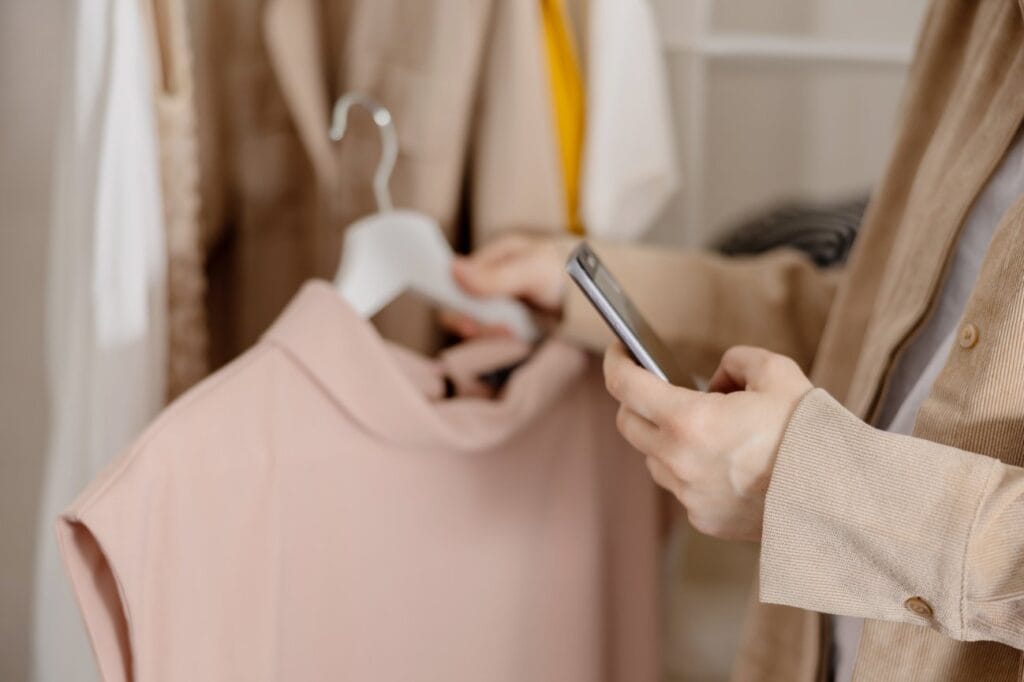
Depop welcomes a wide range of items, but certain categories perform particularly well on the platform. Understanding what thrives on Depop can help you curate your inventory more effectively.
Permitted Items on Depop
While Depop is primarily known for fashion, you can actually sell:
- Clothing and accessories (vintage and contemporary)
- Footwear (especially limited edition or vintage sneakers)
- Jewelry and watches
- Beauty products (new and unopened only)
- Home decor and small housewares
- Books, magazines, and vinyl records
- Handmade items and crafts
- Digital products (like printable art or design templates)
What Performs Best on Depop
Based on current platform data and seller interviews, these categories consistently outperform others:
- Vintage clothing (especially 80s, 90s, and Y2K eras)
- Unique statement pieces that stand out in photos
- Reworked or upcycled garments with creative twists
- Streetwear and casual wear from both mainstream and independent brands
- Platform shoes, combat boots, and unique footwear
- Graphic tees and sweatshirts with bold designs
- Handmade jewelry and accessories
Mark, who has sold over 2,000 items on Depop, notes: “The items that sell fastest for me are always the ones with a story or unique element—whether it’s a rare vintage piece or something I’ve customized myself. Depop shoppers are looking for items they won’t find in every mall or fast fashion site.”
Prohibited Items
Be aware that Depop prohibits selling:
- Counterfeit or replica items
- Used makeup or beauty products
- Electronics (in most cases)
- Animals or animal products from endangered species
- Weapons or weapon accessories
- Alcohol, tobacco, or drugs
- Adult content or services
Tips for Selling on Poshmark

Success on Poshmark requires different strategies than Depop. Here’s how to optimize your approach specifically for the Poshmark ecosystem:
Community Engagement Strategies
Poshmark’s algorithm rewards active participation:
- Share your entire closet at least twice daily (morning and evening)
- Follow new Poshmark users daily (they often follow back)
- Participate in Posh Parties that align with your inventory
- Comment on and share listings from other sellers
- Join Poshmark-focused Facebook groups to learn insider tips
According to Poshmark’s internal data from 2025, sellers who share their listings 3+ times daily see up to 50% more traffic than those who share less frequently.
Optimizing Your Poshmark Listings
To improve visibility and conversion:
- Create detailed titles with brand name, size, color, and style
- Use all 16 available photo slots, including close-ups of tags, fabric, and flaws
- Price items 10-30% higher than your target to allow room for offers
- Use the “Style Tags” feature to categorize your items accurately
- Include measurements in your descriptions to reduce questions
- List similar items in multiple sizes/colors together to encourage bundle purchases
Leveraging Poshmark’s Unique Features
Poshmark offers several tools that successful sellers use strategically:
- Closet Clear Out (CCO): Drop prices by at least 10% to trigger shipping discounts for interested buyers
- Offer to Likers (OTL): Send private discounts to users who have liked your items
- Bundle Discounts: Set automatic discounts when buyers purchase multiple items
- Posh Ambassador Program: Work toward meeting the requirements to gain additional visibility
- Seasonal Sales: Align your inventory with Poshmark’s platform-wide promotions
Jennifer, a Poshmark Ambassador with over $50,000 in sales, advises: “The key to Poshmark success is consistency. I dedicate 30 minutes each morning and evening to sharing, following, and sending offers. This regular engagement has built my following to over 100,000 people, which directly translates to sales.”
Is Poshmark Safe?

Security is a major concern for both buyers and sellers on online marketplaces. Here’s what you should know about Poshmark’s safety features:
Buyer and Seller Protection
Poshmark offers several safety mechanisms:
- Purchase Protection: Poshmark holds payment until buyers receive and approve items
- Shipping Protection: All shipments include tracking and insurance up to $500
- Authentication Service: Items over $500 are sent to Poshmark first for verification
- Secure Payment Processing: Credit card and personal information is encrypted
- Dispute Resolution: Poshmark mediates conflicts between buyers and sellers
Identity Protection
Poshmark implements several measures to protect your personal information:
- Your home address is never shared with buyers (only shown on the shipping label)
- Communication happens entirely within the app’s messaging system
- Profile information can be limited to what you choose to share
- Payment details are securely stored and processed
Common Safety Concerns
While Poshmark is generally safe, be aware of these potential issues:
- Scam Attempts: Be wary of requests to communicate or transact outside the platform
- Return Fraud: Some buyers may claim items are damaged or not as described
- Phishing Messages: Never click suspicious links claiming to be from Poshmark
- Counterfeit Items: Report listings that appear to be selling fake branded goods
According to Poshmark’s latest security report, less than 0.5% of transactions result in serious disputes, making it one of the safer online marketplaces for fashion.
Is Depop Safe?

Security is equally important on Depop, though the platform handles safety differently than Poshmark.
Transaction Protection
Depop provides these safety features:
- PayPal Protection: All transactions are processed through PayPal, which offers buyer and seller protection
- In-App Messaging: All communication should stay within the Depop app
- Dispute Resolution: Depop’s support team can help resolve transaction issues
- Address Privacy: Your address is only visible on shipping labels
Common Safety Issues on Depop
Be aware of these potential concerns:
- Dropshipping: Some sellers list items they don’t actually have in possession
- Misleading Photos: Items may look different than their listings
- Outside Payment Requests: Never agree to pay outside the platform
- Counterfeit Items: Like other marketplaces, fake branded items can appear
Safety Best Practices
To stay safe as a Depop seller:
- Always ship with tracking information
- Take detailed photos of items before shipping
- Keep all communication within the Depop app
- Document the packaging process for valuable items
- Respond promptly to buyer concerns or questions
Recent platform data indicates that Depop has improved its anti-fraud measures, with a 30% reduction in reported scams from 2023 to 2025. However, the more casual nature of the platform can sometimes mean fewer protections than the more structured Poshmark environment.
Item Types and Marketplace Comparisons

Depop and Poshmark each attract different types of shoppers and sellers. Knowing the strengths of each platform helps you target the right audience and get better results from your sales.
Streetwear, Vintage, and Luxury Goods
Depop is popular with younger buyers who like streetwear and vintage clothes. You can find lots of unique pieces, 90s styles, and indie brands here. If you have vintage tees, old-school sneakers, or trendy streetwear like Supreme, Depop is usually a good choice.
Poshmark, on the other hand, is stronger in luxury goods and well-known designer brands. Brands like Gucci, Prada, and high-end vintage items sell better here. Poshmark’s audience often shops for closet staples from brands like Coach, Michael Kors, and Lululemon as well.
It’s common for sellers to list certain items on both platforms. For truly rare or collectible streetwear or one-of-a-kind vintage, you might see interest on either site. But for verified luxury and designer bags, Poshmark offers more tools for authentication and buyer protection.
Shoes, Handbags, and Accessories
Shoes and accessories are sold on both sites, but trends differ. On Depop, buyers search for unique sneakers, funky hats, or vintage bags. If your items are trendy or rare, you’ll find more interest there.
Poshmark is a go-to for designer bags, especially luxury brands like Gucci and Louis Vuitton. There’s a special service for authenticating designer handbags valued over $500. For mainstream handbags or accessories like watches and jewelry, Poshmark’s buyer base is often willing to spend more.
Both platforms allow you to list shoes and accessories as part of outfit bundles. Depop is strong in youth trends and quirky items, while Poshmark does best with classic handbags, business shoes, and elegant accessories aimed at working adults.
Selling Collectibles and Electronics
Depop sometimes lists collectibles, like vintage toys, band tees, or rare pins. If it fits a “retro” or nostalgic vibe, you’ll probably find an audience. Electronics, however, are not a main focus on Depop. Small gadgets or old cameras can sell, especially if they have a vintage look.
On Poshmark, sellers mostly focus on clothing and fashion items. Although you can list some tech accessories (like headphones or smartwatches), full electronics and collectibles are less common. Poshmark’s policies prioritize fashion and lifestyle over general tech.
If you have collectibles outside of clothing, your success will depend on how well those items fit each site’s main audience. For most electronics, a site like eBay is usually a better option. For fashion-related collectibles or vintage electronics, Depop fits better than Poshmark.
Competition and Discoverability

Both Depop and Poshmark have active user bases, but the features for sellers and the level of visibility your listings get can be very different. The right platform for you may depend on how crowded the marketplace is and how easy it is for buyers to find your items.
Saturation and Popularity
Depop is popular with younger buyers looking for trendy or vintage clothing. There are many sellers offering similar styles, which means you will face more competition in crowded categories like streetwear and Y2K fashion.
Poshmark also has many active users and a large range of listings. The marketplace is saturated with clothes, accessories, and home goods. Poshmark uses “closets,” which are personalized shops where buyers can browse your items. Since many sellers list similar brands and items, it can be hard to stand out.
The high number of listings on both sites means buyers have more choices, so you need to make your items eye-catching and priced right.
Marketing and Promotion Tools
Depop allows you to promote your listings through its search and explore features. You can also share your shop and specific items on Instagram and social media, since Depop’s buyers are active there. Adding strong photos and using trending hashtags can help increase your discoverability.
Poshmark lets you share your own listings and others’ items during “Posh Parties,” which are virtual group sales. You can send offers to interested buyers and run limited-time drops. Poshmark’s algorithm also rewards active sharing, so regular activity can help boost your items in search results.
Both platforms give you tools to help market yourself, but Poshmark relies more on its internal sharing system, while Depop’s format works better with outside social media promotion. Table:
| Platform | Internal Promotion | Social Media Integration | Sharing System |
|---|---|---|---|
| Depop | Explore/Search tabs | Strong (Instagram, etc.) | None |
| Poshmark | Posh Parties/Offers | Limited | Daily sharing needed |
Platform-Specific SEO Strategies
To maximize visibility on each platform, you’ll need different SEO approaches:
Depop SEO Tips:
- Use descriptive keywords in your titles that Gen Z shoppers would search for
- Include era-specific terms (Y2K, 90s, vintage) when applicable
- Add popular style keywords (cottagecore, dark academia, etc.)
- Use 3-5 relevant hashtags per listing
- Update listings regularly to stay near the top of search results
Poshmark SEO Tips:
- Include the exact brand name in your title
- Specify clothing type, size, and color in the title
- Use the “Style Tags” feature to categorize your items
- Share items during relevant Posh Parties
- List the original price to show the discount you’re offering
Recent platform data shows that Depop listings with 3-5 relevant hashtags receive 40% more views than those without tags. On Poshmark, listings that include the brand name in the first three words of the title appear in 70% more search results.
Seasonal Selling Strategies

Understanding when to sell different types of items can significantly impact your success on both platforms. Here’s a strategic calendar to guide your selling throughout the year:
Winter (December-February)
- Depop: List winter streetwear, holiday party outfits, and Y2K-inspired cold-weather gear
- Poshmark: Focus on designer coats, boots, cashmere, and winter accessories from mainstream brands
- Best time to sell: Early November for maximum winter inventory exposure
Spring (March-May)
- Depop: List festival wear, vintage spring dresses, and lightweight statement pieces
- Poshmark: Focus on spring workwear, pastel colors, and transitional jackets from recognizable brands
- Best time to sell: Late January/early February to catch early spring shoppers
Summer (June-August)
- Depop: List vintage swimwear, graphic tees, and 90s/Y2K summer pieces
- Poshmark: Focus on vacation wear, summer dresses, and lightweight designer items
- Best time to sell: April/early May before summer shopping peaks
Fall (September-November)
- Depop: List vintage sweaters, unique jackets, and back-to-school streetwear
- Poshmark: Focus on boots, scarves, and layering pieces from popular brands
- Best time to sell: Late July/August to capitalize on fall fashion planning
Holiday Season
- Depop: List unique gift items, party clothes, and statement accessories
- Poshmark: Focus on designer accessories, NWT items, and gift-worthy luxury pieces
- Best time to sell: Start listing holiday items in October for maximum exposure
According to seasonal trends data, both platforms see approximately 30% higher search volume during seasonal transitions, making these prime listing periods for relevant inventory.
Alternatives to Depop and Poshmark

Several other platforms offer different ways to sell secondhand clothes online. Each one serves a specific audience, has its own selling process, and uses different fees or shipping systems.
eBay
eBay is one of the oldest and largest online marketplaces. You can sell a wide range of clothing items, from vintage and designer brands to everyday wear. eBay gives you more control over pricing, auctions, and listings.
The platform charges a final value fee and a small listing fee, so you should review the fee structure before listing items. eBay also lets you ship items yourself, which provides flexibility but means you need to handle packing and postage.
Buyers on eBay expect detailed descriptions and clear photos. You have a bigger global audience, which can be good for rare or unique pieces. Customer support is available, and the site offers buyer and seller protections.
Mercari
Mercari is user-friendly and often called a good choice for beginners. It works well for both clothes and other items like electronics or home goods. Creating listings takes only a few minutes with the app.
Mercari charges around 10% in selling fees, which is less than some other platforms. They also charge a payment processing fee. You can choose to ship items yourself or use Mercari’s prepaid labels.
Mercari’s audience is broad and includes both men and women. You don’t have to stick to only fashion or vintage items. The mobile-first design and built-in shipping options make Mercari a convenient option if you want to sell quickly without much hassle.
ThredUP
ThredUP is a consignment and secondhand clothing platform focused on women’s and children’s clothes. Unlike peer-to-peer platforms, you ship your items in a “Clean Out Kit,” and ThredUP takes care of photographing, listing, and shipping once they accept your items.
Payouts depend on the brand, quality, and current demand. ThredUP provides low payouts compared to peer selling but saves you time and effort. You don’t need to take photos, write descriptions, or handle customer service.
You can track what happens to your sent items through your account. Any unaccepted items can be returned or recycled. This hands-off process is best if you want convenience and don’t need to control pricing.
Vestiaire Collective
Vestiaire Collective specializes in verified luxury, designer, and high-end fashion. Every item sold goes through an authentication process to guarantee quality and brand authenticity.
You set your own prices, but the platform verifies listings and must approve them. Vestiaire takes a commission of around 10%-20%, depending on the price and location.
The site caters to a global audience looking for secondhand designer clothes, bags, shoes, and accessories. If you have luxury goods and want a secure, reputable way to sell them online, Vestiaire is a strong option.
Etsy
Etsy is well known for handmade and vintage goods. You can sell vintage clothing that is at least 20 years old or upcycled fashion. Listings are simple to create, and you can set your own shipping rules and shop branding.
Etsy charges a small listing fee per item and takes a cut of each sale. If you focus on unique, creative, or one-of-a-kind pieces, Etsy has a targeted audience interested in those items.
A good storefront, branded banner, and consistent photos can help you attract more buyers. The platform works best for sellers interested in establishing a brand or shop identity.
Grailed
Grailed is popular for men’s fashion, especially streetwear and designer labels. It’s peer-to-peer, so you list and manage your own items, talk directly with buyers, and ship products yourself.
Grailed’s fees are around 9%, making it cheaper than some other platforms. Listings should include accurate photos and brand details. The audience is knowledgeable about fashion and expects honest, detailed information.
If you have designer men’s clothing, sneakers, or limited-edition items, Grailed offers access to a community that values those pieces. Secure payment processing and a detailed feedback system protect both buyers and sellers.
Rebag
Rebag is a buy-and-sell marketplace focused on luxury designer handbags, watches, fine jewelry, and other accessories. You can sell high-end bags from brands like Chanel, Louis Vuitton, Hermès, and Gucci.
Rebag inspects and authenticates all items before they are listed. This ensures the buyer gets a genuine product while protecting sellers from disputes. You can get an instant offer based on your item’s pictures, or consign for a higher payout.
Rebag’s platform is best if you want a fast, reliable sale for luxury accessories with authentication included. Payment choices are flexible and can include cash or store credit.
Appar
Appar is an online clothing consignment platform. It focuses on making it easy to sell quality secondhand fashion through a streamlined process. You send in your clothes, and Appar handles the rest, including photographing, listing, and shipping once your items are sold.
Appar accepts selected brands and items in excellent condition. You get paid out after the item is sold and delivered. The consignment model means the payout may be lower than selling directly, but it removes the need to handle buyers or listings yourself.
The process is efficient and can be a good fit if you want to declutter without managing each sale. Appar provides clear guidelines on which brands are accepted, helping you know what to send.
Cross-Posting Strategy: Using Both Platforms

Many successful sellers maximize their profits by listing items on both Depop and Poshmark simultaneously. Here’s how to effectively manage a cross-platform selling strategy:
Inventory Management
To avoid double-selling the same item:
- Use a spreadsheet or inventory management app to track listings across platforms
- Include platform-specific SKUs in your listings (e.g., DP-001 for Depop, PM-001 for Poshmark)
- Remove items from all platforms immediately after a sale on any platform
- Consider using cross-posting tools like Vendoo or List Perfectly to save time
Pricing Strategy
Optimize your pricing for each platform’s audience:
- Price items 10-15% higher on Poshmark to account for the higher fees and offer-friendly environment
- Keep prices firm on Depop where haggling is less common
- Use different promotional strategies: bundle discounts on Poshmark, free shipping on Depop
Time Management
Efficiently handle multiple platforms with these tips from experienced cross-sellers:
- Dedicate specific days to each platform (e.g., Monday/Wednesday/Friday for Poshmark, Tuesday/Thursday/Saturday for Depop)
- Batch your activities: take all photos at once, then create listings for both platforms
- Use the same photos but adjust the style and description for each platform’s audience
- Set aside 30 minutes daily to maintain both accounts (sharing on Poshmark, refreshing on Depop)
According to Sarah, who sells on both platforms: “Cross-posting increased my sales by 40% with only about 15% more work. The key is having systems in place so you don’t double-sell and disappoint customers. I use the same photos but write different descriptions for each platform’s audience.”
Making the Right Choice: Depop or Poshmark?

Choosing between Depop and Poshmark depends on what you want from an online selling experience. The main differences involve fees, buyer expectations, and the style of secondhand fashion you offer.
Factors to Consider for Sellers
Fee Structure: Poshmark charges a flat 20% fee on every sale, which is easy to remember but can take a big cut from profits. Depop used to have selling fees, but now you only pay payment processing fees, making it a bit cheaper for most sellers.
Shipping: Poshmark offers pre-paid shipping labels, so you just print and ship. Depop lets you choose who pays for shipping and which carrier to use. Some sellers find Depop shipping more flexible, while others like Poshmark’s simple process.
Audience and Sales Volume: Poshmark buyers expect name-brand fashion and trendy clothing. Depop’s users look for unique, vintage, handmade, and even “weird” items. You may need to spend more time on photos and listing details on Depop to catch buyers’ attention.
Ease of Use: Both platforms are mobile-friendly. Poshmark’s app is known for being user-friendly, while Depop gives you more freedom in setting item prices and offers fewer rules.
Which Platform Suits Your Inventory?
If your clothes are brand-name, modern, or in high demand, Poshmark is a good choice. Buyers on Poshmark often search for specific labels and are willing to pay more for trusted brands.
For vintage, handmade, upcycled, or hard-to-find fashion, Depop is a better fit. Items that do not have mainstream appeal, such as Y2K styles or one-of-a-kind pieces, often sell quicker on Depop.
Here is a quick comparison:
| Poshmark | Depop | |
|---|---|---|
| Best For | Branded, current styles | Vintage, quirky, unique, handmade |
| Fees | 20% per sale | Payment fee only |
| Shipping | Pre-paid label (US) | Flexible, seller or buyer pays |
| Audience | Brand-focused, trendy shoppers | Trendy, creative, young buyers |
| Time Investment | High (daily sharing required) | Medium (quality photos crucial) |
| Learning Curve | Medium (community rules) | Low (Instagram-like interface) |
Knowing your inventory type makes it easier to match it with the right marketplace. Aligning your items with the right audience boosts your chance of quick and successful sales.
Case Studies: Success Stories on Both Platforms

To provide real-world context, here are experiences from successful sellers on both platforms:
Case Study 1: Emily’s Vintage Boutique
Emily started selling her personal vintage collection on Depop in 2022. Within six months, she had built a following of over 10,000 users and now sells an average of 50 items monthly.
Key Strategies:
- Developed a distinctive photography style with natural lighting and outdoor settings
- Created a consistent posting schedule (3 new items every Tuesday and Friday)
- Built relationships with followers through personalized messages
- Expanded inventory by sourcing from estate sales and thrift stores
- Uses Instagram to drive traffic to her Depop shop
“On Depop, aesthetics matter as much as the items themselves,” Emily explains. “I invest time in styling each piece and telling its story. My customers aren’t just buying clothes—they’re buying into a specific vintage vibe.”
Case Study 2: Mark’s Designer Resale Business
Mark transitioned from casual Poshmark selling to a full-time reselling business generating $8,000+ monthly. He specializes in contemporary designer brands like Lululemon, Anthropologie, and Free People.
Key Strategies:
- Shares his entire closet 3 times daily at peak hours (morning, lunch, evening)
- Sends offers to likers within 24 hours at 15-20% off listing price
- Maintains detailed spreadsheets tracking cost, listing date, and profit margins
- Reinvests profits into purchasing more inventory from outlet stores and clearance racks
- Achieved Poshmark Ambassador status for increased visibility
“Success on Poshmark is all about consistency and engagement,” Mark shares. “I spend about 90 minutes daily maintaining my closet, but the return is worth it. The key is understanding that Poshmark rewards sellers who actively participate in the community.”
Case Study 3: Lisa’s Cross-Platform Success
Lisa sells on both platforms, with different strategies for each. She maintains about 200 active listings split between both sites and generates approximately $4,000 monthly in combined sales.
Key Insights:
- Lists trendy, unique pieces on Depop (average price point: $35)
- Lists mainstream and designer brands on Poshmark (average price point: $45)
- Uses the same photography but adjusts descriptions for each platform’s audience
- Manages inventory with a color-coded spreadsheet system
- Spends 30 minutes on Poshmark daily for sharing and 30 minutes weekly refreshing Depop listings
“Using both platforms has been game-changing for my business,” Lisa reports. “Items that sit for weeks on Poshmark often sell within days on Depop, and vice versa. You just need systems to keep track of everything and prevent double-sells.”
Conclusion
After exploring all aspects of selling on Depop and Poshmark, it’s clear that both platforms offer unique advantages for different types of sellers and inventory. Your success depends on matching your items, selling style, and time availability with the right platform.
Key Differentiators Recap
Depop excels for:
- Vintage, unique, and creative fashion items
- Sellers with strong visual and styling skills
- Y2K, streetwear, and trend-forward pieces
- Younger audiences and Instagram-savvy sellers
- Lower fees on individual sales
- Flexible shipping options
- Sellers who prefer a more independent approach
Poshmark shines for:
- Contemporary and designer brand names
- Classic styles and mainstream fashion
- Sellers willing to actively engage with the community
- Structured selling with predictable shipping
- Authenticated luxury items
- Older, more established customer base
- Sellers who appreciate a supportive community environment
Strategic Recommendations
Based on comprehensive platform data, seller experiences, and current market trends, here are the most effective approaches for 2025:
- For casual sellers clearing out personal closets:
- If your items are primarily mainstream brands in good condition, Poshmark will likely yield better results
- If your style is unique, vintage-inspired, or trendy, Depop may connect you with more interested buyers
- Consider time investment – Poshmark requires more daily maintenance, while Depop needs more upfront effort on photography and descriptions
- For aspiring resellers looking to build a business:
- Start on the platform that best matches your inventory, then expand to the other as you grow
- Invest in quality photography equipment regardless of platform choice
- Develop inventory management systems early to scale efficiently
- Consider the cross-platform approach once you have 100+ active listings
- Track your sales data to identify which items perform best on each platform
- For established sellers seeking to maximize profits:
- Use both platforms strategically, allocating inventory based on platform strengths
- Consider time-saving tools like cross-posting software
- Build your own social media presence to drive traffic to both shops
- Reinvest in high-performing categories based on your sales data
- Consider expanding to niche platforms for specific inventory types
Final Thoughts
The online reselling landscape continues to evolve rapidly, with both Depop and Poshmark adapting their features and algorithms regularly. The most successful sellers stay flexible, continuously learn, and adjust their strategies based on performance data.
Whether you choose Depop’s creative, visual-first approach or Poshmark’s community-driven marketplace—or strategically use both—the key to success remains consistent: quality items, accurate descriptions, responsive customer service, and strategic pricing will always outperform platform-specific tricks in the long run.
By aligning your inventory with the right platform and audience, you can transform your closet cleanout into serious profit or even build a sustainable side business in the growing secondhand fashion market.
Frequently Asked Questions
1. Which platform has lower fees, Depop or Poshmark?
As of 2025, Depop generally has lower fees for sellers. Depop charges a payment processing fee (typically 3.3% + $0.45 per transaction) but no selling fee. Poshmark charges a flat fee of $2.95 for sales under $15 and takes 20% commission on items sold for $15 or more. For items priced under $20, Depop’s fee structure is usually more favorable; for higher-priced items, the difference becomes less significant.
2. How long does it take to get paid on Depop versus Poshmark?
On Depop, funds are typically available in your PayPal account immediately after a buyer makes a purchase, though new sellers may experience holds of up to 21 days until they establish a selling history. On Poshmark, you receive your funds after the buyer receives and accepts the item (or automatically after 3 days if the buyer takes no action). After this, you can withdraw funds via direct deposit (2-3 business days) or request a check (1-2 weeks). Generally, Depop offers faster access to your earnings.
3. Can I sell the same items on both Depop and Poshmark simultaneously?
Yes, you can cross-post items on both platforms to maximize exposure, but you must be diligent about inventory management. When an item sells on one platform, you need to immediately remove the listing from the other platform to avoid double-selling. Many successful sellers use inventory tracking systems like spreadsheets or specialized apps to manage cross-posted items. While this strategy requires more work, sellers report 30-50% higher overall sales when using both platforms strategically.
4. Which platform is better for selling designer or luxury items?
Poshmark generally offers a better environment for selling authentic designer and luxury items. The platform provides an authentication service for items priced over $500, giving buyers more confidence in high-value purchases. Poshmark’s audience also tends to include more buyers looking specifically for designer brands and willing to pay premium prices. While Depop has luxury buyers as well, they’re typically looking for unique or vintage designer pieces rather than contemporary luxury items.
5. Do I need to take different types of photos for Depop versus Poshmark?
Yes, the photography styles that perform best on each platform differ significantly. Depop favors styled, editorial-type photos with models, creative backgrounds, and an Instagram-worthy aesthetic. The platform limits you to 4 photos per listing, so making them visually striking is crucial. Poshmark allows up to 16 photos and performs better with clear, well-lit images on plain backgrounds that show all details, measurements, and any flaws. Successful sellers often take both types of photos during the same session, then use the appropriate style for each platform.

